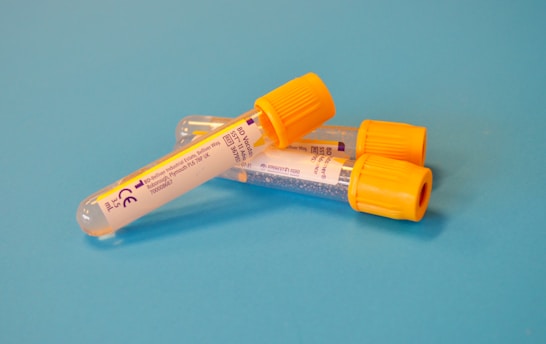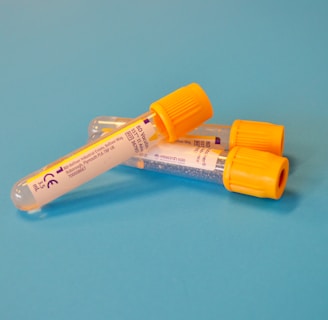Blood disorders: what are they?
BLOOD DISORDERS
E.C | Pharmacist
12/28/20232 min read


Understanding Blood Composition
Blood consists of red blood cells (RBCs), white blood cells (WBCs), platelets, and plasma. Each component plays a crucial role in maintaining health and preventing illness.
Anemia:
Causes: Anemia occurs when there is a shortage of red blood cells or heamoglobin. Causes include iron deficiency, vitamin B12 deficiency, chronic diseases, and genetic factors.
Symptoms: Fatigue, weakness, pale skin, shortness of breath, and dizziness.
Treatment: Iron or vitamin supplements, dietary changes, and addressing underlying causes.
Hemophilia:
Causes: Hemophilia is a genetic disorder that impairs blood clotting due to a deficiency of clotting factors.
Symptoms: Excessive bleeding, easy bruising, joint pain and swelling.
Treatment: Clotting factor replacement therapy, medication, and lifestyle modifications.
Thrombocytopenia:
Causes: Low platelet count, often resulting from bone marrow disorders, autoimmune diseases, or certain medications.
Symptoms: Easy bruising, prolonged bleeding, petechiae (small red or purple spots on the skin).
Treatment: Medications to increase platelet count, addressing underlying causes.
Leukemia:
Causes: Cancer of the blood-forming tissues, leading to the overproduction of abnormal white blood cells.
Symptoms: Fatigue, weight loss, frequent infections, easy bruising, and joint pain.
Treatment: Chemotherapy, radiation therapy, stem cell transplantation.
Sickle Cell Disease:
Causes: Genetic disorder resulting in abnormal hemoglobin, causing red blood cells to become rigid and crescent-shaped.
Symptoms: Pain, anemia, jaundice, and organ damage.
Treatment: Pain management, blood transfusions, hydroxyurea, and bone marrow transplant in severe cases.
Clotting Disorders:
Causes: Imbalance in the clotting process, leading to excessive clot formation (thrombosis) or inadequate clotting (bleeding disorders).
Symptoms: Deep vein thrombosis, stroke, excessive bleeding.
Treatment: Anticoagulant medications, lifestyle changes, and in some cases, clot-dissolving medications.
Conclusion
Blood disorders can significantly impact an individual's health and quality of life. Early diagnosis, proper management, and ongoing medical care are essential for effectively addressing these conditions. If you or someone you know experiences symptoms suggestive of a blood disorder, seeking medical attention promptly can make a significant difference in managing the condition and maintaining overall well-being.
Remember, this article provides a general overview, and specific cases may require personalized medical advice. Consult with healthcare professionals for accurate diagnosis and tailored treatment plans.
References/Resources:
Mayo Clinic. (2021). Blood Basics. [https://www.mayoclinic.org/tests-procedures/blood-basics/about/pac-20384632]
American Society of Hematology. (2021). Blood Disorders. [https://www.hematology.org/Patients/Basics/]
The human circulatory system is a complex network responsible for transporting oxygen, nutrients, and waste products throughout the body. Blood disorders can disrupt this delicate balance, affecting various components of the blood and potentially compromising overall health. In this article, we will explore common blood disorders, their causes, symptoms, and available treatments.
TheRemotePharmacist Ltd © 2022
The Remote Pharmacist is an online platform created by a pharmacist that aims in delivering updated and trustworthy information and advice on anything related to pharmacy and healthcare.
Reframe your inbox
Subscribe to our newsletter and never miss an article.
We care about your data in our privacy policy.
